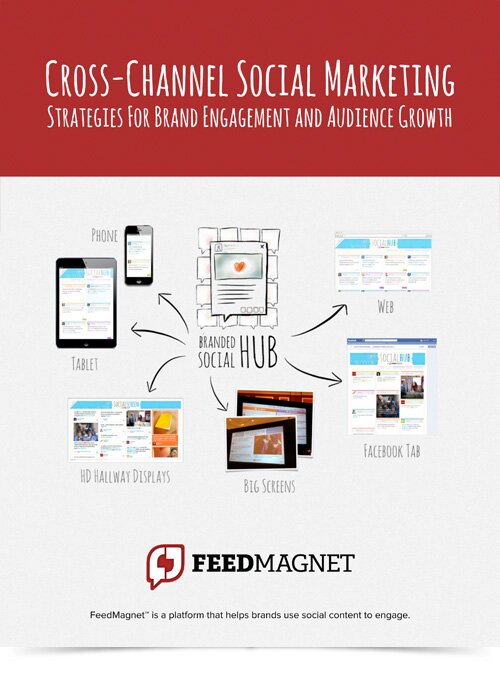Updates, opinions, customer stories, and random musings from the FeedMagnet team.
MTV's giant HD screen in Times Square is showing Instagram, Twitter, and Facebook posts all day today leading up to the New Year's Eve ball drop. We built the display on top of the FeedMagnet social curation platform using the Isotope JavaScript library and 3D animation using Google Chrome's CSS3 support – creating an effect that looks like video, but is updating it's content in real-time.
by Jason Ford on Dec. 31, 2012
Read more
Behind the scenes at FeedMagnet, there are over 100 hosted servers powering our individual clients. As we grow, managing so many systems would become a plate-spinning exercise beyond our human capacity if not for the software tools we deploy, including CopperEgg.
by Frank Burns on Nov. 6, 2012
Read more
We believe in the philosophy of not reinventing the wheel if we don't have to. That's why we use Django as our development framework. And that's why we decided to use CheddarGetter - a web service that takes care of all of our recurring credit card billing. We wrote a wrapper for CheddarGetter in Python, called PyCheddar, and have released it as open source so others can take advantage of it as well.
by Jason Ford on Jan. 31, 2010
Read more
Google has made some major strides in adding new features to Google Analytics over the past year. I used to recommend Google Analytics for basic tracking needs and Omniture (which is expensive) for when custom user tracking or goal conversion was required. After spending some time playing with the new custom variables and segmentation features in Google Analytics, I think I can say that for the vast majority of websites I've worked on - even those run by large enterprise companies with complex requirements - Google Analytics is all you need. And the best part is, it's free.
by Jason Ford on Dec. 11, 2009
Read more
This week, in anticipation of our alpha launch, Jason asked me to write a mechanism for giving a user the ability to embed one of our feeds on their webpage. You know the drill here; we give them a box of code to copy and paste onto their page, and then after that it just sort of magically works. Anyway, in the process of doing this, I was at a point where I wanted to format what the date and time would look like.
Jason and I do a pretty good job of talking about what's coming around the corner, and he'd mentioned to me in passing that one thing he'd like in the future is a mechanism to allow the user to customize what the time formatting looked like, so I wanted to make sure I planned for that in advance. So, this morning I took on the challenge of taking a JavaScript date object (created from an integer Unix timestamp) and formatting it.
I decided that the best use of time was probably just to write a function to take a date and output it in an arbitrary way, rather than hard-coding the exact formatting we were going to use to start. That would allow me to easily accept an arbitrary format later, and also allow Jason some flexibility if he didn't like how one of the formats looked when he saw the final page; he could just edit the format string rather than asking me to revisit the date formatter.
by Luke Sneeringer on Nov. 19, 2009
Read more


